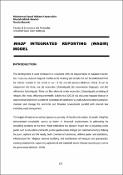Options
A Waqf-Integrated Reporting (WAQIR) Model: Performance, Governance, and Socio-Economic Impact
Date Issued
2020
DOI
10.4018/978-1-7998-1245-6.ch014
Abstract
This chapter proposes the best reporting practices for waqf institutions, concerning information disclosure on performance, governance, and socio-economic impact using the waqf integrated reporting (WAQIR) model. The WAQIR model is viewed as a comprehensive reporting tool for waqf institutions. This study reviewed previous literature and reporting guidelines for waqf and similar organisations, such as not-for-profit and faith-based organisations, to identify the appropriate measurements for disclosure, limited not only to the input and output of the waqf project, but also its governance and socio-economic impact. Based on the review, the WAQIR model is explicated with four pillars of disclosure: (i) waqf financial and non-financial; (ii) waqf governance; (iii) waqf performance; and (iv) waqf socio-economic impact. The proposed WAQIR model would be useful for waqf institutions in implementing best waqf reporting practices. This could help them to enhance their accountability and to promote transparency, enabling the sustainability of the entire waqf management practices.
File(s)
Loading...
Name
Waqf Integrated Reporting (WAQIR) Model.pdf
Size
396.88 KB
Format
Adobe PDF
Checksum
(MD5):099decd1e51d53cca70d26bbbca6894e